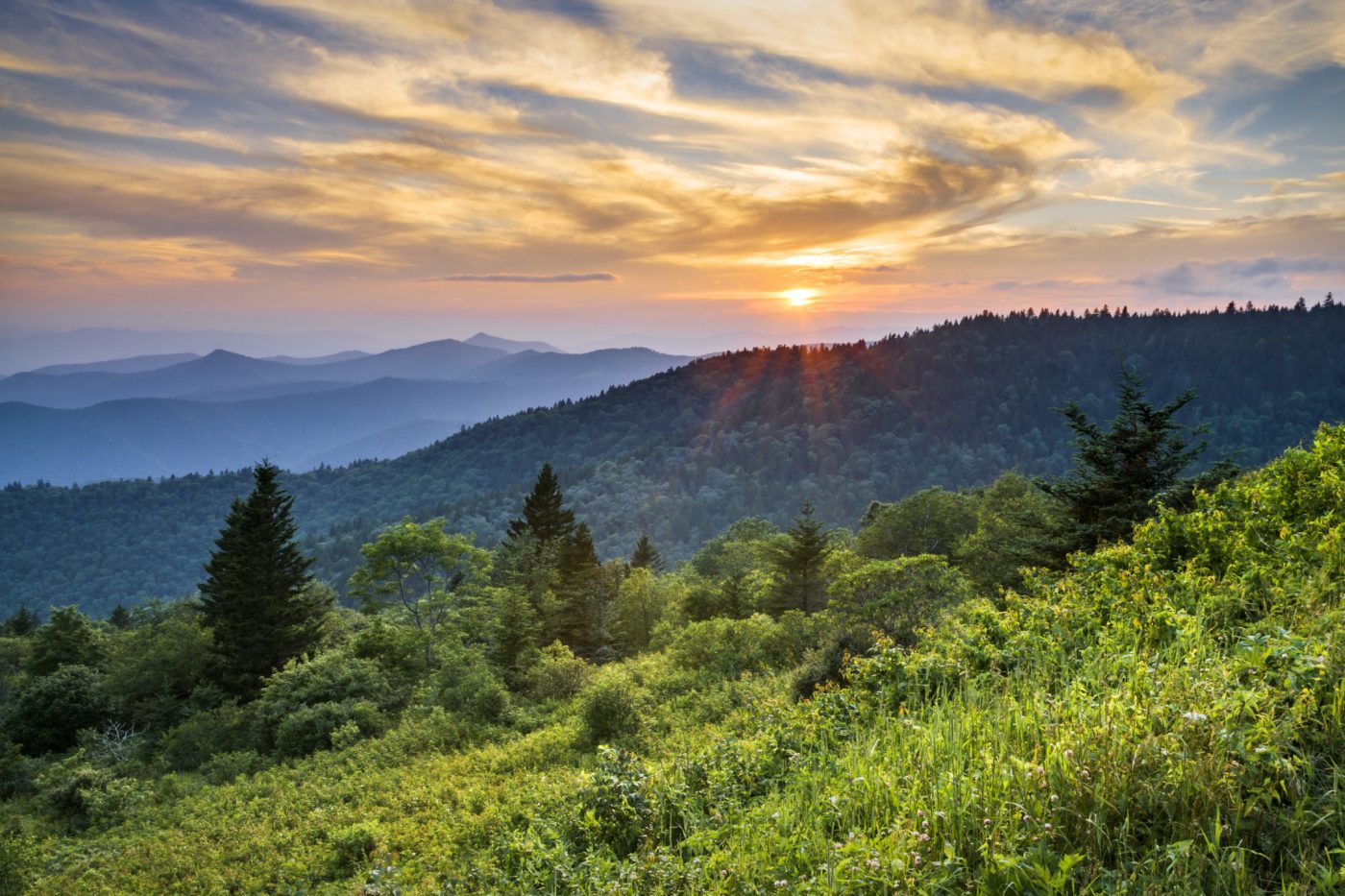
The park’s showy flame azaleas and rhododendrons also burst to life starting in April in the low elevations and into June up high. More than 1,500 flowering plants can be found in the region, including delicate spring beauties, several types of trillium, trout lilies, wild geranium, and orchids visit from mid-April to mid-May for the best blooms. The Great Smoky Mountains have an explosion of wildflowers in spring and summer. Stop to Smell the Wildflowers The Appalachian Trail runs through rhododendron bushes in bloom on Jane Bald northeast of Great Smoky Mountains National Park. Drive or hike to the higher elevations for sweeping views over the park’s 100-plus tree species painting the hills in bright oranges, yellows, and reds target mid-September for higher-elevation colors and mid-October for lower ones. The Smokies are famous for their colorful trees in fall.


Go Autumn Leaf-Peeping Sunset over the Smoky Mountains in autumn Deposit Photos Strong cross-country skiers and snowshoers can also hit the high point in winter for guaranteed solitude. The peak is popular, so go early in the day to beat the crowds. Don’t miss the view from the spaceship-like observation tower up top.

To tag the high point, drive the scenic access road (closed December through March) from Newfound Gap and walk a half-mile to the summit. This 6,643-foot round-top peak sits at the top of the park-and the state of Tennessee. Climb Clingmans Dome Clingmans Dome at Sunset Deposit Photos Don’t leave the park without ticking off at least one of these top 10 to-dos in Great Smoky Mountains National Park, including historic sites, grand overlooks and waterfalls.


 0 kommentar(er)
0 kommentar(er)
